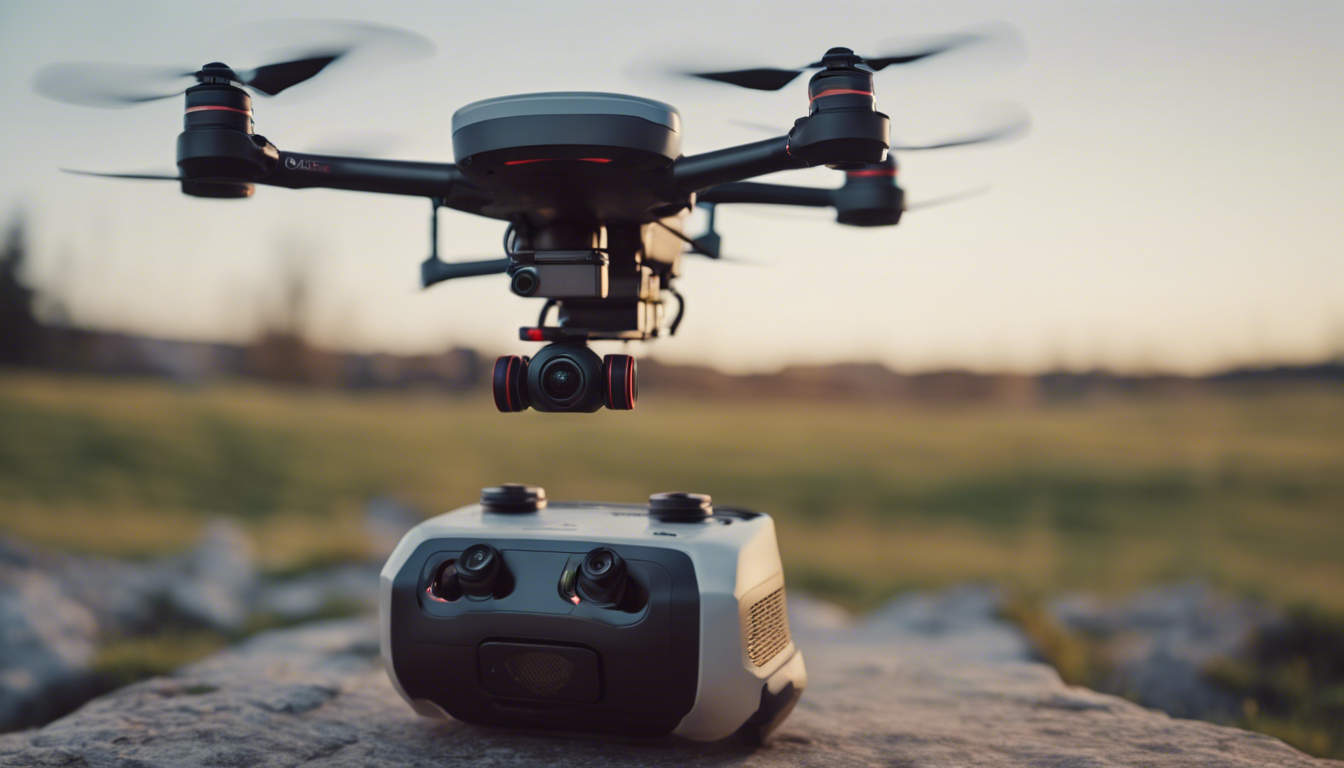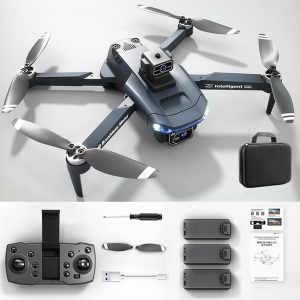
Setting Up Your Drone Development Environment
Alright, if you are looking to dive into the enthralling world of drone development, you’re in for an adventure that’ll make you feel like a real-life Tony Stark! The first thing you need to know is how to get your drone development environment off the ground. And trust me, it’s not just about unpacking a shiny new drone and letting it loose in the sky; there’s some setup to do before takeoff.
To wield your drone like a tech wizard, you’ll need a dedicated space on your computer. We’re talking about an Integrated Development Environment, or IDE for short. Don’t worry; it’s not as intimidating as it sounds. Popular choices among drone developers include Microsoft’s Visual Studio Code or PyCharm when you plan to use Python. These powerful tools come with all sorts of useful features like code completion and debugging assistance, making your coding journey smoother than a drone gliding on a calm day.
Once your IDE is up and running, now, let’s talk about the heart of your drone – its firmware. Now, depending on your drone model, you might be dealing with different firmware. For the DIY fanatics, you might even flash custom firmware to have full control. But hey, if you’re not looking to tinker too deeply, sticking with the manufacturer’s firmware is completely fine. Just make sure it’s up to date for the best performance and latest features.
Now here comes the fun part – connecting your drone to your development environment. This usually involves some kind of middleware or SDK (Software Development Kit). If you happen to have your hands on a popular consumer drone like those from DJI, they offer their own SDK that allows your programs to talk to this drone. Install it following their guides, buckle up, and you are almost ready to roll.
Don’t say goodbye to simulators, because let’s be honest, mishaps happen and they’re often followed by the sound of your wallet crying. A simulator allows you to test your drone codes in a virtual environment; it’s like playing a video game where crashing won’t cost you an arm and a propeller. Quite a few simulators integrate with popular IDEs and are invaluable for both beginners and pros alike.
Finally, if Python is going to be your trusty sidekick through this journey, setting up Python on your machine is essential. Install the latest version, then get familiar with libraries such as DroneKit or DJI’s SDK for Python. These libraries abstract a lot of the complexity and let you send commands to your drone with ease.
Remember, getting your environment set up is the first step to unlocking the world above. A little patience at this stage will lift your drone adventures to new heights. So go on, start coding, start flying, and most importantly, start creating—your personal eye-in-the-sky awaits!
Basic Drone Commands with Python Libraries
Now that your lair…I mean, dev space, is up to the challenge, let’s roll up our sleeves and tinker with some Python magic for drones. But first, a little secret: you can actually tell your drone to perform flips or follow a path with just a few lines of code. Yes, it’s like having a genie, but instead of rubbing a lamp, you type out commands!
Hold onto your joysticks because libraries like DroneKit make it a piece of cake to issue basic commands. What’s DroneKit, you might ask? Imagine it as your personal drone whisperer, translating lines of code into actions. You can ask your drone to take off, land, or even snap a photo with the grace of saying “please” and “thank you” – all thanks to Python.
Here’s a cool tidbit: these libraries often use something called MAVLink messages, which are like text messages that your drone understands perfectly. The catch is, you don’t need to know the drone’s language. The library does the dirty work for you, sending out these MAVLink messages when you execute your Python code.
Picture this: with just drone.takeoff(), you can watch your drone ascend into the air without touching any remote control. It feels almost like telekinesis, doesn’t it?
But what’s even more delightful are the safety features built into these libraries. Say your script tells this drone to soar sky-high but something goes awry. Well, these clever libraries will often have built-in fail-safes that can auto-land your drone if it loses communication with your code. That’s a virtual superhero cape for your drone!
Getting these libraries to play nice with your drone does require a bit of set-up. You might be surprised that connecting your drone via USB or through the network can turn your laptop into an omnipotent flight control panel.
And once connected, here is where things get interesting. With a script no more complicated than a recipe for banana bread, you could program your drone to take off, move in a square pattern while recording video, and then land gently back at home base. Here’s how that might look:
take_off()
fly_to_the_right(5)
fly_forward(5)
fly_to_the_left(5)
fly_backward(5)
land()
Now, obviously you’ll need the exact command syntax provided by the library documentation, but that’s pretty much it! It feels a bit like playing a video game where you script your own cheat codes. Just keep in mind to respect local regulations and privacy laws – no going hacking into the neighbors’ secrets!
In a nutshell, Python libraries offer you the keys to the kingdom where drones bend to your will, offering countless possibilities to tinker and innovate. Just remember that with great power comes great responsibility – always test your code and fly safely! So immerse yourself in the code, let your creativity loose, and watch as your drones do the baileys—a dance to the rhythm of your programming genius!
Implementing Autonomous Flight Patterns
With the nitty-gritty of establishing a development environment out of the way and the basics of GPS-based commands tucked under your belt, you are ready to let your drone spread its wings with autonomous flight patterns. Now, here’s where things get really sci-fi. Instead of manually controlling every little maneuver, you’re about to script entire sequences of actions for your drone to execute on its own – we’re talking real autopilot stuff!
To begin with, let’s imagine you want your drone to automatically patrol your backyard. You don’t need to follow it around with a remote control; you’ll write a script that is essentially your drone’s marching orders. Using Python libraries, you could craft instructions that send the drone to specific GPS coordinates, have it hover and scan the area, perhaps even recognize certain objects or anomalies, and report back. The applications are as boundless as the sky!
patrol_sequence()
move_to_coordinates(lat1, long1)
hover_and_scan(area1)
move_to_coordinates(lat2, long2)
hover_and_scan(area2)
return_to_home()
In reality, to build these autonomous flights, you’d be using functions that set up waypoints or leverage real-time data. Libraries often come packed with functions that allow for complex maneuvers such as circle, follow me, and spline waypoint which makes the flight path smooth as silk.
But here’s something you might not know – autonomous drones can also make decisions on the fly. Say a gust of wind pushes it off course; the drone can automatically correct its flight path without any input from you. It’s like having a robotic pilot onboard who knows exactly how to handle the controls.
Pre-flight checks are also a major factor in autonomous flights. Your script may include parameters that require checking battery levels and satellite connections before initializing takeoff sequences. Intelligence in programming ensures that safety and reliability are not left to chance.
Let’s turn up the cool factor – have you ever heard of swarm flying? Yeah, it’s exactly what it sounds like. Multiple drones can be programmed to fly in formation or carry out coordinated tasks, all synchronized by a master script that you’ve developed. They could be lighting up the sky in a synchronized dance or providing comprehensive aerial surveillance covering vast areas.
Even with all this autonomy, you’re never completely hands-off. Emergency commands can be integrated into your script, offering immediate take-over controls should the need arise. It’s essential to always have a “kill switch” or an “immediate land” function to ensure safety for those on the ground and for the drone itself.
In sum, automating drones is about blending creativity with technology. As you venture into scripting autonomous flight patterns, bear in mind environmental variables, regulatory compliance, and ethical considerations. Still, the process is packed with excitement and is as rewarding as unveiling your own magic trick, where this drone becomes your wand and the sky becomes your stage. So go ahead and program that aerial ballet – your personal drones are ready to perform at your command.
